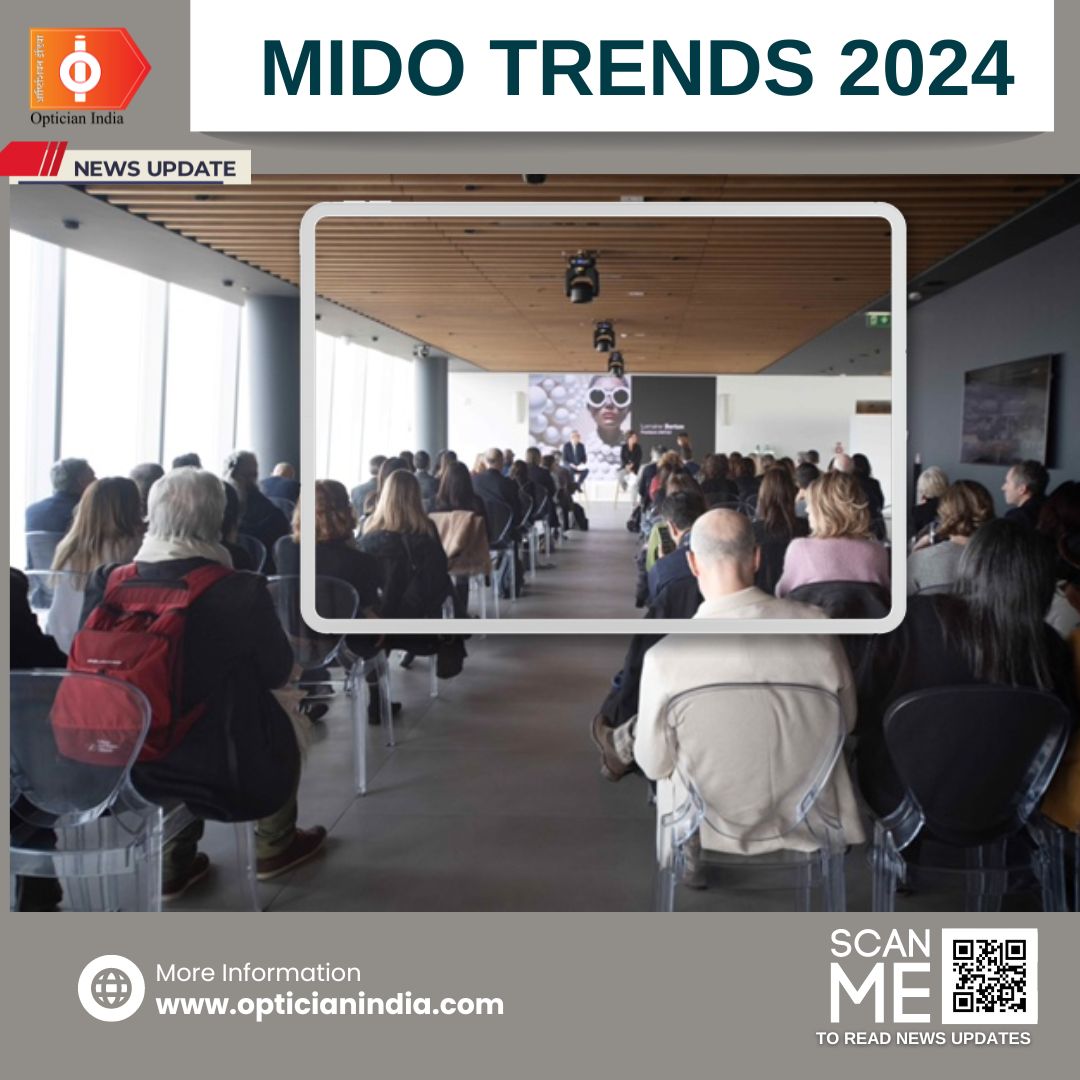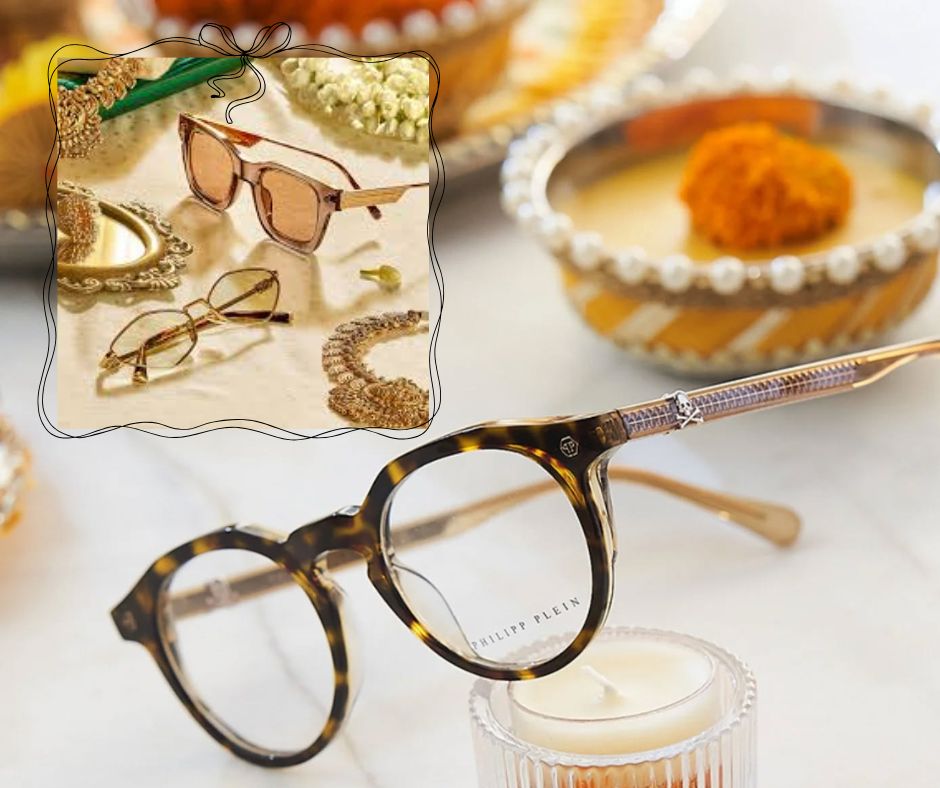MIDO TRENDS 2024 – Alessandra Albarello

There’s a lens through which new trends are seen and interpreted and that is environmental sustainability. No longer a choice, but a necessity. For businesses, this ethical aspect takes absolute priority, linked primarily to materials. Not only in terms of their composition or origins (certified if of natural origin), but also their quality and lasting durability because creating timeless accessories is one of the most crucial present-day challenges.
So, we will start here to define very thin yet ample, or bold and compact shapes. They’re crafted to be lightweight, comfortable and strong by using special techniques and innovative materials of different densities and diverse combinations. Not to mention functionality. Thus, eyewear acquire aesthetic qualities that immediately establish an empathetic, sensory relationship with the
consumer, visually expressing, with authenticity and sincerity, the confluence of artisan tradition and cutting-edge technology.
Between tradition and the future, where heritage means searching corporate archives for signs, symbols and shapes, retracing the DNA of a brand in order to reassert its identity and consistency, a crucial exercise at a time in which many companies are celebrating their anniversaries. Or, some brands come back. Because design is also a key factor, almost indispensable in defining the concept of timelessness. Classic versatile colors make a comeback, or neutral shades, with the return of halftones, like grey and grey-green, while nature-inspired chromatics contrast elegantly with saturated, vivid or deep colors, softened and made serene, spiritual and warm by matte finishes or exotic alchemies that create unique nuances.
Light then becomes a basic constructive element of eyewear, achieving its utmost expression through transparent or translucent materials that, with their many facets, amplify like real prisms even vitamin and Pop colors. Nothing is left to chance and balance is created through contrasts, especially in the minimalist shapes made with new, bold thicknesses, cut outs and geometries where the material gains the upper hand or loses itself completely in the shape, while iconic styles from the past transform themselves into contemporary eyewear, becoming something else. At times, it is the complex textures that attract our attention; made with the help of 3D printing.
On one hand, shapes and thicknesses are large, almost sculptural, on the other, there is an osmotic tendency toward dematerialization, fluidity, transformation, to chromatic transmigration. An impression of there/not there that blends into the surrounding landscape, “absorbing” or “reflecting” the light. Mirrored lenses, or with subtle shading, shimmering materials, hybrids, liquid shapes or enveloping masks that almost become a second skin, at times with dual side lenses. Identity and personalization take two separate paths: the logo, often drawn from the past, that becomes an emblem and a pretext to narrate or call to mind the history of a brand. And accessories, they now shine as co-protagonists, especially chains – chunky or fine –
and charms, that become jewels and necklaces.
Inspirations and synergies formed at the creative level are anything but trivial, revealing thoughtful, genuine, meticulous cultural research, ranging from art to design, architecture to fashion and jewelry (a widespread theme), from cinema to sports, with poetic, romantic and familiar drifts. At times, one’s own geographic and historic origins indicate the path to take, as well as the iconic names in eyewear that have defined very specific, recognizable styles. The exploratory attitude is holistic, artisan craftsmanship supported and facilitated by technology, by AI and by everything else that progress can currently make available – but to be utilized with an entirely different awareness. With a focus on substance and the inherent value of eyewear, thus also proposing a new concept in luxury.
Inspiration/Themes
AI ARTISANAL INTELLIGENCE
Authentic sculptures and micro-architectures where the material voices its presence without losing sight of its function. Not coincidentally, Brutalism and Bauhaus are clear inspirations. The artisan aspect and hand-crafting of natural materials, like horn, are enhanced and supported by state-of-the-art technologies, processes that transform the surfaces with ice- and glass-like effects, satin, rough or unpolished finishes, lending them a natural appearance and creating tactile, sensory perceptions. Often, finishes are matte or satin-like, but also perfectly smooth and polished; they are the product of sophisticated, exemplary research, perfected in-house by the companies themselves. Edges and thicknesses are well-defined, the shapes bold and the methods discerned through marks and impressions. Attention to detail is essential and the concept of time becomes another building block, leaving traces that, on metal, become oxidation; engravings reminiscent of jewelry are at times visible on the temples, other times, they are details that evoke distant travels or far-away cultures, in a quest for uniqueness and poetic expression. Alchemies and experimentation intersect with other worlds and epochs in a return to the classics, to the solidity and authenticity of real, honest materials. And eyewear take on a talismanic energy, accessories to be kept and passed on.
MIMESIS
The period of forced distancing from people and objects led us, on one hand, to once again desire physical contact, sensory input, with bold shapes and textured effects; and, on the other, to want to breathe again, to expand and float freely in space, defying the laws of gravity. Immaterial, fluid, liquid, eyewear immerse themselves in our cities and reflect them, to be found again in the architecture of skyscrapers, imitating the light and cool shade of nature. They sink, symbolically, into undersea worlds like formless creatures. They re-create the images that surround us. They blend into the landscape, imitating it and moving through it. They are transformed by sunlight. We are exposed and, at the same time, protected by these invisible shields. Rimless spectacles, enveloping masks with a single lens or side lenses, with subtle shadings that blend with skin tones,
as well as with sunsets and light, losing themselves among the skyscrapers and constellations. In this trend, there is even an intangible spiritual aspect that aspires to explore part of an unknown universe, a utopia. Pastel colors, gradient, ethereal, indecipherable, are transformed through the material itself. Often, lenses are treated and interpreted as unique surfaces integrated into the frames.
COLOR SOUL
The color changes and is constantly redefined, filtered by the material that it passes through, mixing itself with the light. Material, light and texture point to new pathways, evoking other dimensions. It is not coincidental that some artists, like Olafur Eliasson, have long tried to reproduce atmospheric elements in their installations, even sunlight, taking apart and putting back together the spectrum of light. Natural and artificial coexist harmoniously, they support and complete one another. Materials like acrylic become prisms, thanks to faceting, at particular thicknesses and cuts and, surprisingly, liberate a neon light. References to Pop Art. These are not random effects but deeply desired. Craftsmanship akin to sculpture, again, achieved through years of research, solid backgrounds, in-depth knowledge and observation of all the possible reactions and characteristics of the materials. Here again is an exquisite expression of shapes that free themselves from their perimeters to elevate the material, bringing it to life; at once here/and not here. And when it comes to solid colors, the surface backgrounds are precise, like calligraphies; the sometimes geometric ones are reminiscent of musical rhythms, with precise rebellious inspirations, like the Acid House of the 1980s. Compromise is not acceptable and there’s also a perceptive consciousness of the visions, constantly filtered and modified by digital realities, by computer screens and iPhones. A parallel, confluent reality that we must increasingly keep in mind in our communication, in our daily lives, to constantly access everything around us, without any obstacles.
Characteristics
Materials
The need to incorporate sustainability has accelerated the exploration and evolution of biocompatible, recycled and recyclable materials, with a preference for those with less impact on the environment, sometimes of natural origins, and focused as much as possible on a circular economy. Not only manufacturers of materials but also some eyewear companies have developed individual behaviors and virtuous, radical production processes, setting an example for many. From fashion and design to architecture, research is across-the-board and unanimous, involving all of the scenarios and supply chains in a sharing of experiences and materials. In addition to the classics, like acetate, much appreciated for their sensory aspect, natural materials like horn, wood and corozo (ivory palm nut) are being used, alongside them are stones, metals and special alloys, carbon fiber and fabric, but, above all, titanium, also used in 3D printing in combination with polyamide. Given the almost absolute absence of waste material, 3D printing is among the most sustainable production processes. Details, often crafted by hand, are very important, like the finishes and surface treatments patented by the companies themselves.
Colors
Alongside calm, natural colors, classic and timeless, like havana, amber and honey that, with bold thicknesses and shapes enhance the material even more, lending it a tactile quality, are the halftones including greys and grey-greens. The chromatic alphabets are very broad because color becomes sophisticated and less defined, even in composition, constantly transforming itself through the density and transparency of the material, the processes and matte or satin finishes. And thanks, as well, to abstract elements like light. Meditative light blues and other blues that extend into the lenses along with some skin tones, pink and peach, at times enhanced by light mirroring. By contrast, saturated vitamin colors, like orange, red, bright green, shocking pink, yellow and coral, interact with the materials, textures, transparencies and light, each time creating different effects. Among the classics, black and white, often expressed in a milky color.
Shapes
Tradition is endlessly inviting us to open its drawers, to explore its files, to bring back signature traits and repropose them in new contemporary products. As expected, we find the timeless classics, including aviators and cat-eyes, at times reinterpreted with new thicknesses, colors, dimensions, materials, details and finishes. Small, bold, compact and sculpted, or large, with thin rims, whether sun or optical, eyewear tend to become timeless accessories. There’s a quest for harmony and balance, often achieved through contrasts. With lines softened or bold, but also with geometric shapes that include the inevitable circle, spectacles nonetheless create an empathic connection with the consumer, intersecting their iconic expectations, thanks to incursions into the 1970s, 80s, 90s, and 2000s.
Accessories
Increasingly present and visible, accessories are now part of many eyewear collections and, in addition to highlighting the wearer’s personality, they strengthen the brand’s identity. Must-haves are chunky or fine chains, some with macroscopic links, made of precious materials. Many frames already have slots or cutouts on the temples to attach them. Some can even be worn as actual pieces of jewelry. The array of choices is vast and even includes practical and ironic multi-function accessories or charms, and, of course, the cases, often in sustainable materials, to flaunt and no longer hide away.

4.jpg)
6.jpg)

3.jpg)
5.jpg)
4.jpg)


1.jpg)



.jpg)
.jpg)



_(Instagram_Post).jpg)
.jpg)
_(1080_x_1080_px).jpg)


with_UP_Cabinet_Minister_Sh_Nand_Gopal_Gupta_at_OpticsFair_demonstrating_Refraction.jpg)
with_UP_Cabinet_Minister_Sh_Nand_Gopal_Gupta_at_OpticsFair_demonstrating_Refraction_(1).jpg)

.jpg)








.jpg)



.png)




